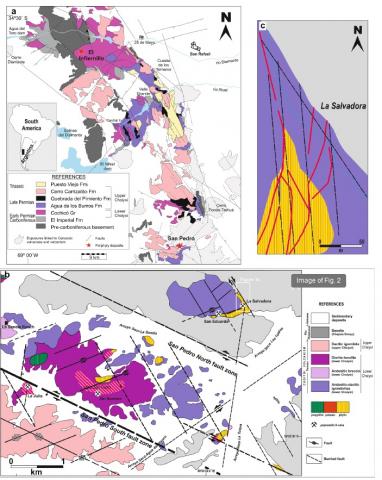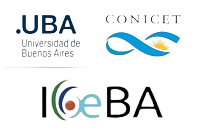M.S. Japas, N.A. Rubinstein, A.L.R. Gómez
2 022
Ore Geology Reviews 143 (2022)
The Mid Permian San Pedro porphyry deposit in the San Rafael Massif (central-western Argentina) offers a valuable opportunity to contribute in the understanding of ore concentration mechanisms operating during the phyllic alteration stage. In this deposit, two generations of low-temperature D-veins (D1 and D2) formed during the phyllic alteration stage. The D2-type veins show an atypical Cu-Ag sulfide paragenesis consisting mainly of galena, chalcocite, native silver, chalcopyrite and bornite, which can not be explained using the traditional cooling model. Based on previous research and own data, we test Reverse Osmosis as a possible mechanism contributing to D2-vein ore deposition. Reverse Osmosis is a pressure-driven retention-selective membrane filtration process resulting in solute/ion retention on the high-pressure side of the membrane. D2-veins from San Pedro porphyry formed at 211◦–176 ◦C during transient fluid overpressures produced by the hydrothermal sealing that followed the earlier D1-vein formation. Besides the temperature range and the declining orogeny, physico-chemical conditions were optimal for Reverse Osmosis to activate because the presence of a semi-permeable phyllic membrane and a transmembrane pressure gradient with hydrothermal fluid pressure exceeding the relatively low stress normal to the fracture walls (σn). This particular condition activated Reverse Osmosis, allowing to get similar membrane rejection values for Cu and Ag chloride complexes at lower fluid temperatures, causing the decrease of the osmotic differentiation performance, and the consequent coeval precipitation of Cu and Ag sulfide minerals.

